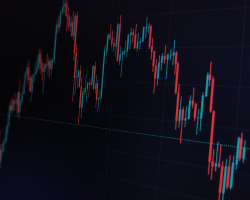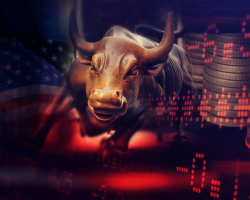A Basic Guide To Financial Derivatives
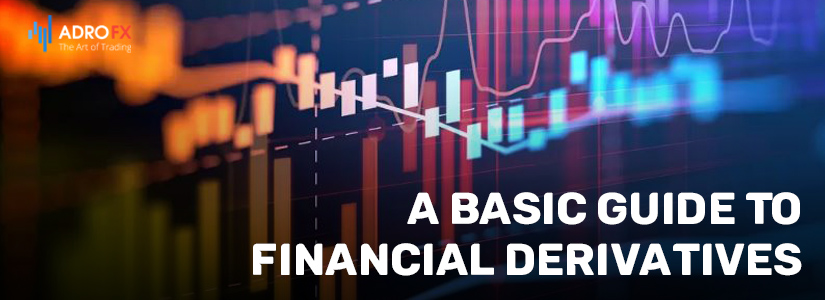
The growth of the world economy after the second industrial revolution and the further development of the post-industrial society, as well as the demand for new methods of exchange trading, brought about the need for an extended toolkit of operations on the financial markets.
This, in turn, led to the emergence of derivative financial instruments, derivatives being one of them.
In contrast to the spot exchange market, the special feature of derivatives is operations with so-called "fictitious capital", i.e. with that which is not directly involved in the investment of the production sector or lending banking activities. Let`s find out how derivatives work, what a derivative is in simple terms, and what risks it carries.
What Are Derivatives and How They Work
A derivative is a financial instrument that is a derivative of an underlying asset.
Simply put, it is a contract between the parties that binds them to mutually fulfill their obligations with respect to the underlying asset. This asset can be a commodity or precious metal, a currency or bond, a stock, or a stock index - basically, any asset that has value.
Just like a classic stock exchange, crypto traders benefit from changes in the price of the underlying asset. Since the future market price of the underlying asset is unknown, all bidders assume the risk. If the commodity has fallen in price at the time of execution, the seller gets some return and the buyer is left with a loss. If the price went up, the buyer wins.
To increase earnings the trader uses leverage - a loan provided by the exchange. The size of the leverage is proportional to the deposit made by a trader. Due to this, the trader can carry out operations on large sums. The size of the leverage depends on the exchange. Most exchanges provide leverage with a commission.
There are many types of derivatives, but most of them refer to risk management and speculative instruments.
Types of Derivatives
We will look at the 5 most common types:
- Futures
- Forward contracts
- Options
- Swaps
- CFDs
Futures
This type of derivatives is often used as an effective hedging tool.
For example, in the production of products, a company uses raw materials, the price of which experiences strong market fluctuations. Therefore, it makes sense to enter into a contract to purchase these raw materials at a fixed price several months in advance.
This contract is advantageous for both parties because the company insures itself against price increases and the supplier of raw materials receives guaranteed sales. In this example, the derivative instrument is the contract, and the underlying asset is the resource being purchased.
If the price of the resource increases more than expected during the term of the contract, the business will save capital. If the price falls or rises less than expected, the business will lose.
However, the point of hedging is that an allowable loss can be factored into the cost of production and deemed acceptable, for the sake of being able to predict costs over the long term and have confidence in the stability of purchasing prices. For businesses, this factor is extremely important.
Futures trading is also available for cryptocurrencies.
For example, a bitcoin futures is more of a speculative instrument, which means that it is traded based on an index price, with bitcoin as the underlying asset.
A quote (mark-to-market price) is taken from spot trading floors, called "index floors". A change in price on those platforms results in a corresponding change in the futures contract quote.
Forward Contracts
This type of contract is similar to futures.
However, they are not standardized contracts and are traded without any clear regulation. As with futures, there is an obligation to buy or sell the underlying asset at a specified date and price.
But because this type of contract is not standardized, both parties can customize the elements of the contract according to their needs and by mutual agreement.
Options
These contracts provide the opportunity to buy or sell a specific asset at an agreed price and time period. It is important to note that it is an opportunity, not an obligation.
This type of contract is covered in detail in our article on options.
In cryptocurrencies, options also gradually find their application and are already used on different exchanges.
Swaps
Large companies, banks, and other financial institutions are more likely to conclude contracts with derivative financial instruments, rather than dealing directly with the underlying assets.
These are interest rate and currency swaps designed to reduce financial transaction risk.
Interest rate swaps can effectively turn fixed-rate debt into floating-rate debt or vice versa.
Currency swaps are used to reduce the effects of strong currency movements, which can make it easier for a business to pay a foreign currency debt or obligation in another country's currency.
The use of swaps carries many nuances and can have significant consequences for large businesses or even provoke both positive and undesirable phenomena in the economy.
As swaps are used to offset and stabilize cash flows and mutual obligations, they can also indirectly influence quotes for certain assets.
CFDs
CFD (contract for difference) - a derivative for the price difference of the underlying asset works in a different way. If during the term of the contract, the asset becomes more expensive, the difference is paid by the seller. If the price falls, the buyer pays it back. Services on fulfillment of transactions of purchase and sale of CFD contracts are provided by cryptocurrency brokers. The client can get increased leverage to place a larger position.
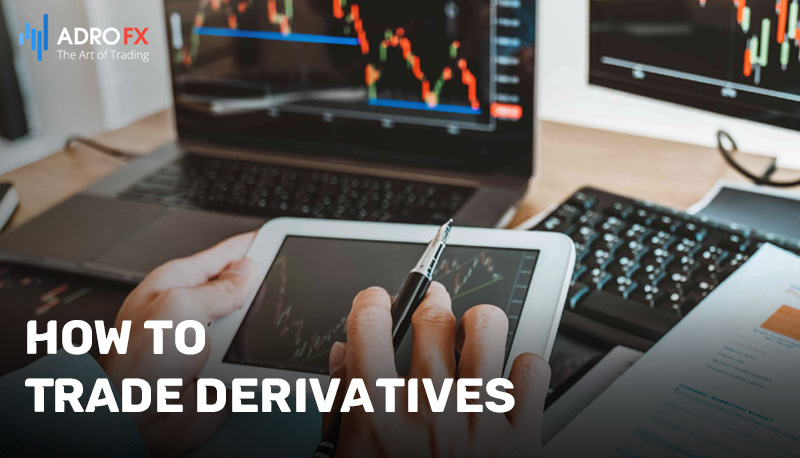
Why Trade Derivatives
Derivatives in the stock market are used by private investors and legal entities. Retail investors most often try to take advantage of the price differences. For example, some market participants believe that the price of gold will rise in three months, while others believe that it will fall. One side turns out to be right and capitalize on this.
Companies have different goal. Although derivatives are available to retail investors, they mainly help economic agents - companies in the financial and non-financial sectors. With derivatives, they reduce uncertainty about future prices of various commodities and can minimize the number of operational risks.
A derivative is used when they want a guarantee to buy or sell an asset in the future or the right to buy or sell it after a time at a fixed price. For example, a company designs furniture but has a six-month waiting list. The buyer can secure the right to become a customer at the current price if he makes a deposit. The goods don't exist yet, they will only be created in the future, but the buyer already has the guarantee.
Under derivatives, the parties agree to buy, sell, exchange, receive, or deliver an asset on predetermined terms, e.g:
- at a certain price;
- at an agreed time and upon the occurrence of certain circumstances.
The transaction may also be concluded subject to any additional conditions, for example, reaching a certain price level. Let us suppose that the supplier and the buyer of wheat in May fix the price and the volume of delivery in July or the automobile industry concludes a contract on purchasing a certain volume of nonferrous metal in nine months, securing itself against a price increase by the fixed term.
Derivatives are more complex financial instruments than stocks or bonds. Derivatives trading is more suitable for experienced or professional investors and traders who are willing to spend a lot of time studying and following the trades.
How to Trade Derivatives
Traders most likely deal with options, futures, and CFDs as they are the most straightforward derivatives. Returns are determined by strategy. For example, you can speculate with an instrument by reselling a currency futures or option. Alternatively, you can try to benefit from the price of the asset, for example buying an option on security at a below-market price, waiting for the option to be exercised, and selling the asset at a higher price. All of these activities take place on an exchange.
Derivatives exchanges are platforms on which derivatives are traded. As a matter of fact, there are practically no exchanges offering only derivatives, because the vast majority of traders consider trading with them to be just one of the instruments. Besides, as we have already mentioned, many people use derivatives for hedging risks.
For example, there is the New York Mercantile Exchange, the Malaysian Exchange, and the London Metal Exchange. All of these platforms trade commodities and derivatives - futures and options.
With AdroFx you can trade different CFDs, including stocks, cryptocurrencies, metals, and indices. The advantage of working with the CFD broker is that it is licensed, offers a wide range of CFDs, charges no commissions, and requires a minimum deposit.
Risks of Trading Derivatives
Several factors determine the financial potential of derivatives trading. The first is the quoted price. The second is the guarantee obligation, that is, the premium that protects the seller of the derivative in case the buyer refuses to buy. The third factor is that derivatives are standardized and dependent on the underlying asset, so they are predictable in the sense that the buyer of a derivative can successfully predict the price movement of the asset in the desired direction. And of course, there is leverage.
Trading derivatives through a broker involves the use of leverage when a trader can place a position for an amount greater than the investment. For example, a leverage of 1:5 means that a trader can enter into a futures contract for $100 with only $20. Due to this, derivatives trading has a huge potential for lucrativeness .
Unfortunately, the risk ratio is also high. The most common risk is market risk. It consists of the fact that if the price of the underlying asset changes, the seller or the buyer suffers losses. If you trade with high leverage and did not guess the trend in the price of the asset, you will lose a lot of funds. The smallest is operational risk, which is the likelihood of technical problems, transaction delays, and the like.
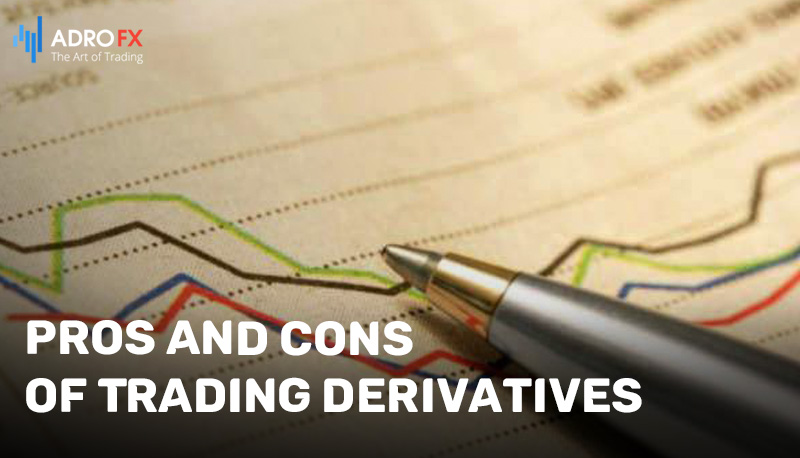
Pros and Cons of Trading Derivatives
The derivatives market allows investor to manage their portfolio more effectively. Derivatives are perfectly suited for hedging risks (in fact, they were created for this very reason). And implemented in the contract margin allows one to increase one's returns, given the best of circumstances.
One important advantage of derivatives is the necessity to deposit only a certain part of the principal amount, which allows one to pay less than for the purchase of a real share, bond, etc.
Also, derivatives provide more opportunities in the market. For example, swaps allow you to change interest rates or insure a lender against default.
But there's another side to the coin. Warren Buffett, in his letter to shareholders, called derivatives "financial weapons of mass destruction."
This rather complicated financial instrument has a number of disadvantages which may lead to traders losing deposit. One of these risks is leverage. Earning from borrowed capital is the privilege of professionals; beginners should be very careful with that.
The second risk is the sensitivity of such instruments to the changes before expiration. This applies to the cost of holding the underlying asset and interest rates. Let us also note the legal vulnerability of OTC derivatives, classified by law as betting and deprived of judicial protection.
At the same time, futures, options, swaps, and other contracts, if used incorrectly, can bring great losses.
Summary
It is quite advantageous to trade derivative financial instruments due to several reasons:
- Their purchase and sale and subsequent accounting are accompanied by a rather low level of transaction costs (commissions and other related expenses);
- Derivatives allow earning on both increase and decrease of the rate of the underlying asset;
- Trading is performed with the use of leverage: to conclude a futures contract, the only thing needed is to deposit a certain margin (percentage of the contract amount).
Derivatives are used by traders to benefit from fluctuations in the rate of the underlying asset. They can always be resold before the expiration date. Besides speculation, futures contracts can be concluded with the purpose of hedging risks of unfavorable price change for a certain underlying asset. All in all, if used correctly, derivatives can be a great solution for traders willing to hedge risks.
About AdroFx
Established in 2018, AdroFx is known for its high technology and its ability to deliver high-quality brokerage services in more than 200 countries around the world. AdroFx makes every effort to keep its customers satisfied and to meet all the trading needs of any trader. With the five types of trading accounts, we have all it takes to fit any traders` needs and styles. The company provides access to 115+ trading instruments, including currencies, metals, stocks, and cryptocurrencies, which make it possible to make the most out of trading on the financial markets. Considering all the above, AdroFx is the perfect variant for anyone who doesn't settle for less than the best.

